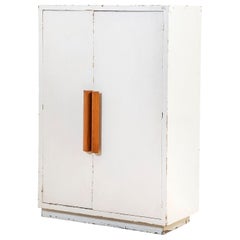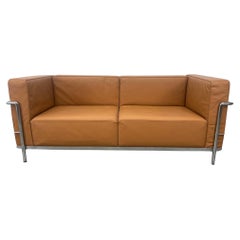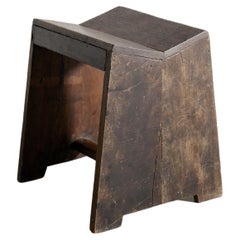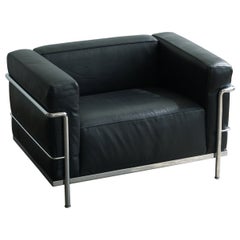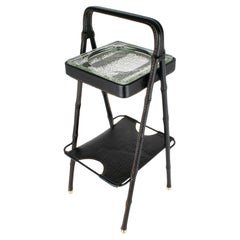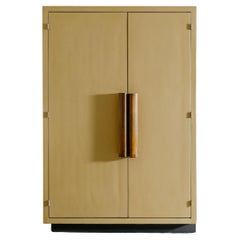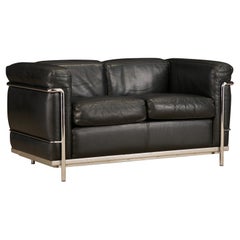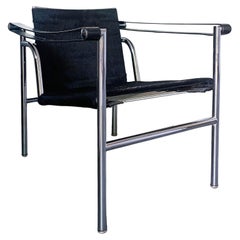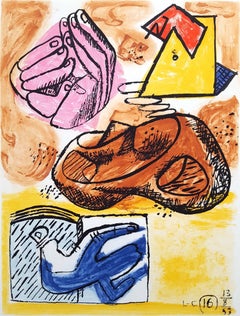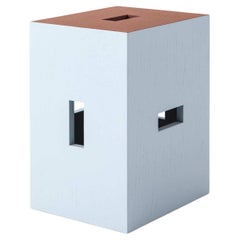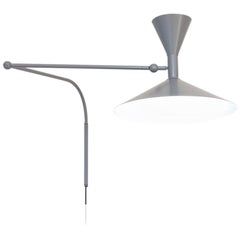Le Corbusier
Swiss-born Charles-Édouard Jeanneret, best known by his adopted name Le Corbusier, was a highly influential architect, designer, painter, urban planner and writer whose career spanned almost five decades. His designs for sofas, chairs and other furniture are spare, minimal and efficient but at the same time offer supreme comfort.
A pioneer of progress-minded modern architecture, Le Corbusier sought to impose a rational order on the chaos of the world through design. He rejected the excessive architectural ornament and developed a style that became known as brutalism, creating buildings with elemental geometric forms that were made of industrial materials such as steel and reinforced concrete.
Le Corbusier believed that pure, well-designed spaces could offer a lesson in how little is needed to achieve happiness. To convey this notion, the architect prioritized modern, open interiors and emphasized light, rational designs. His architecture and interiors share a clear sense of space and structural order, underlining the beauty in harmony, proportion and simplicity.
Le Corbusier’s furniture espouses these same ideals. Collaborating with his cousin, Pierre Jeanneret, and trailblazing designer Charlotte Perriand, he devised such iconic pieces as the LC2 Petit Confort armchair and the LC4 chaise longue. Each couples a tubular chrome frame with soft, supple leather upholstery, lending an organic warmth to an industrially made design. In his furniture, Le Corbusier broke new ground in ergonomics.
The shape of the LC4 chaise is taken directly from the human form; the classic cowhide upholstery makes the sitter feel weightless; and the piece features an adjustable positioning mechanism to promote total relaxation. Bereft of ornament and prized for its functionality, the LC series created by Le Corbusier, Perriand, and Pierre is currently manufactured by Cassina.
Such planning and intelligence were the hallmarks of Le Corbusier’s career. Whether in his designs for private residences such as the Villa Savoye near Paris, apartment towers like the Unité D'habitation in Marseilles, or in his furniture, he worked toward a style of living that was expansive and flexible. The strength and simplicity of line of Le Corbusier’s sofas, chaise longues and other seating pieces give them a sculptural presence in any décor, yet they are sublimely restful. And as you will see on 1stDibs, Le Corbusier’s furniture reflects a worldly taste: it is at once refined, cosmopolitan and chic.
Find a collection of vintage Le Corbusier furniture for sale on 1stDibs.
| Average Sold Price |
| $2,199 |
| Styles |
| Materials |
| Related Creators |
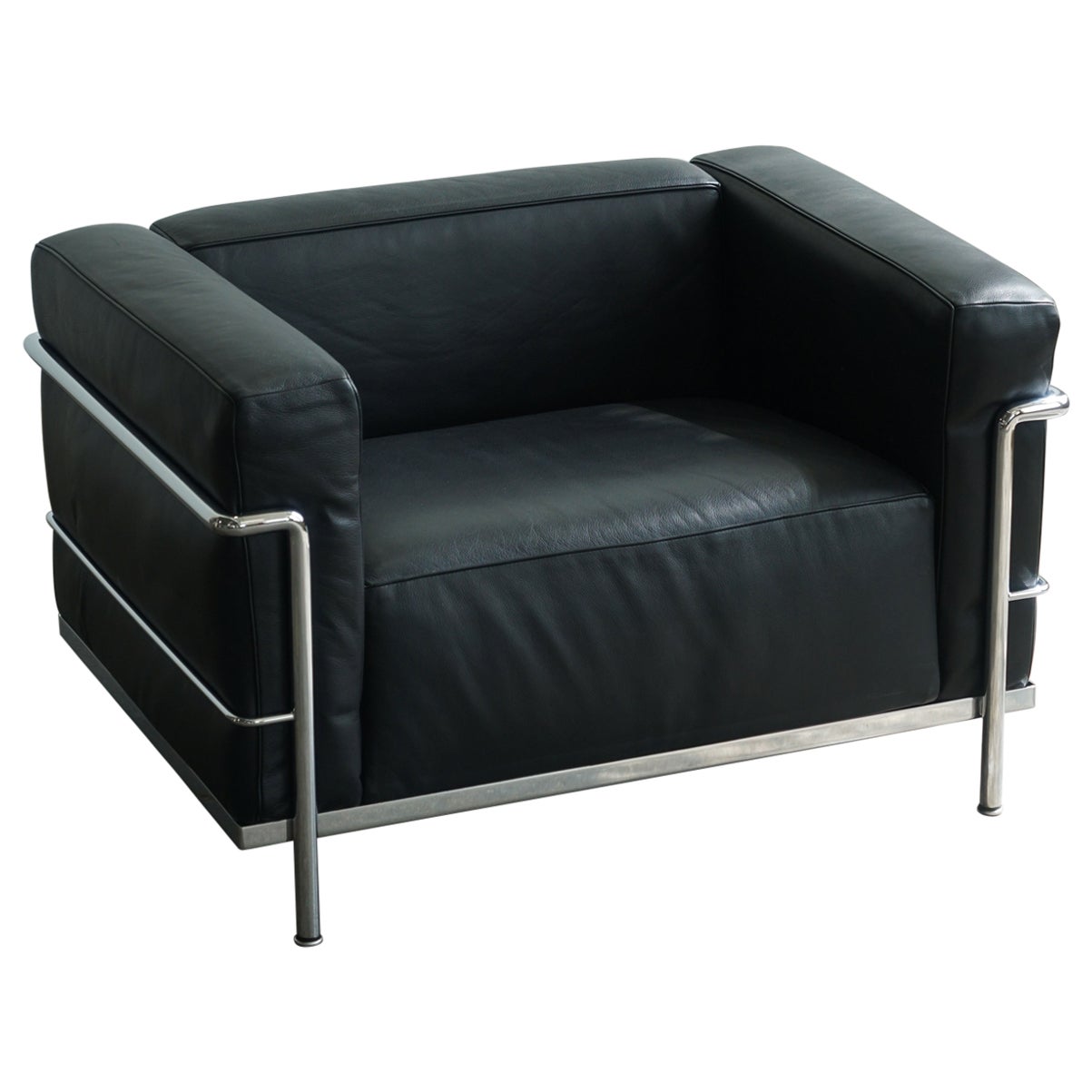

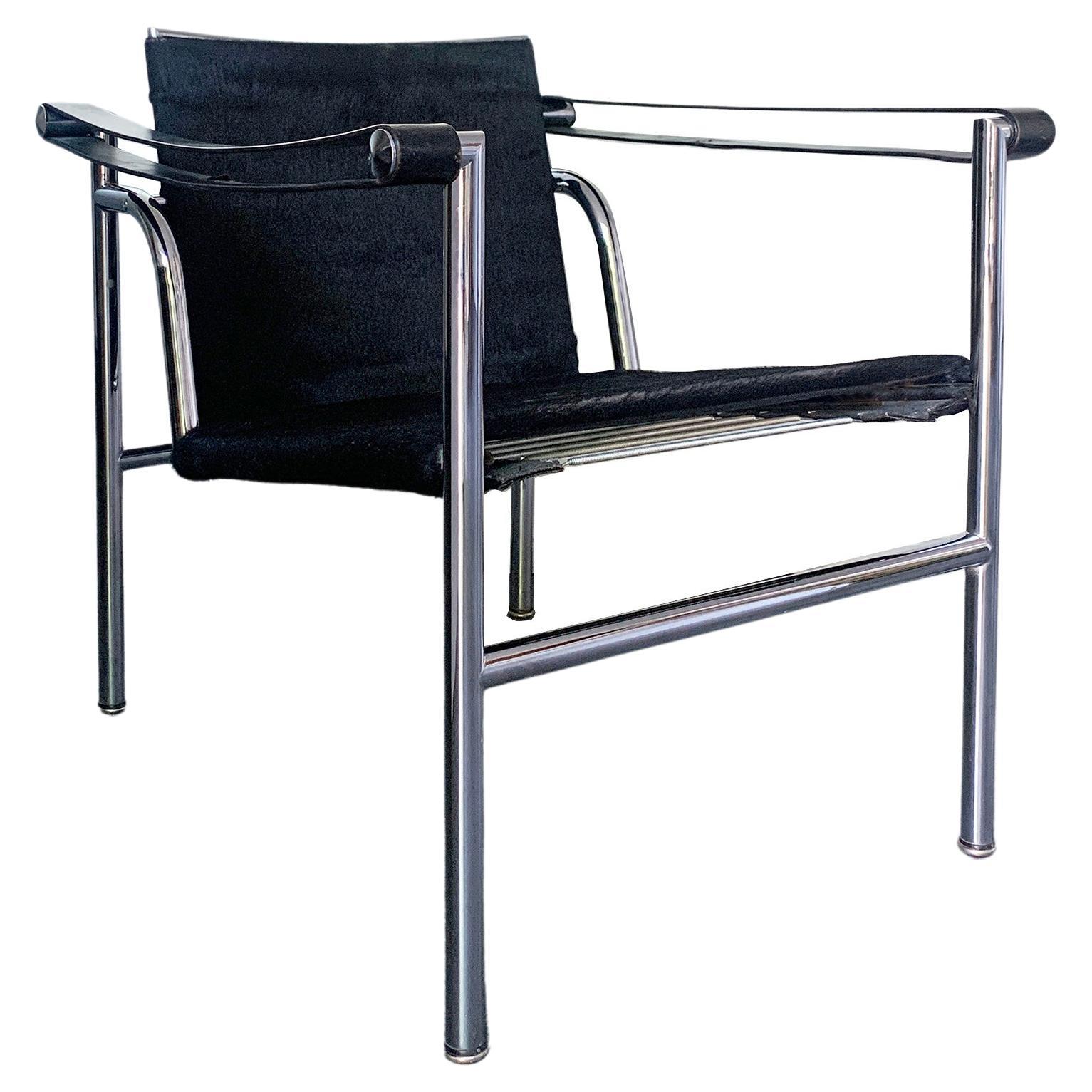
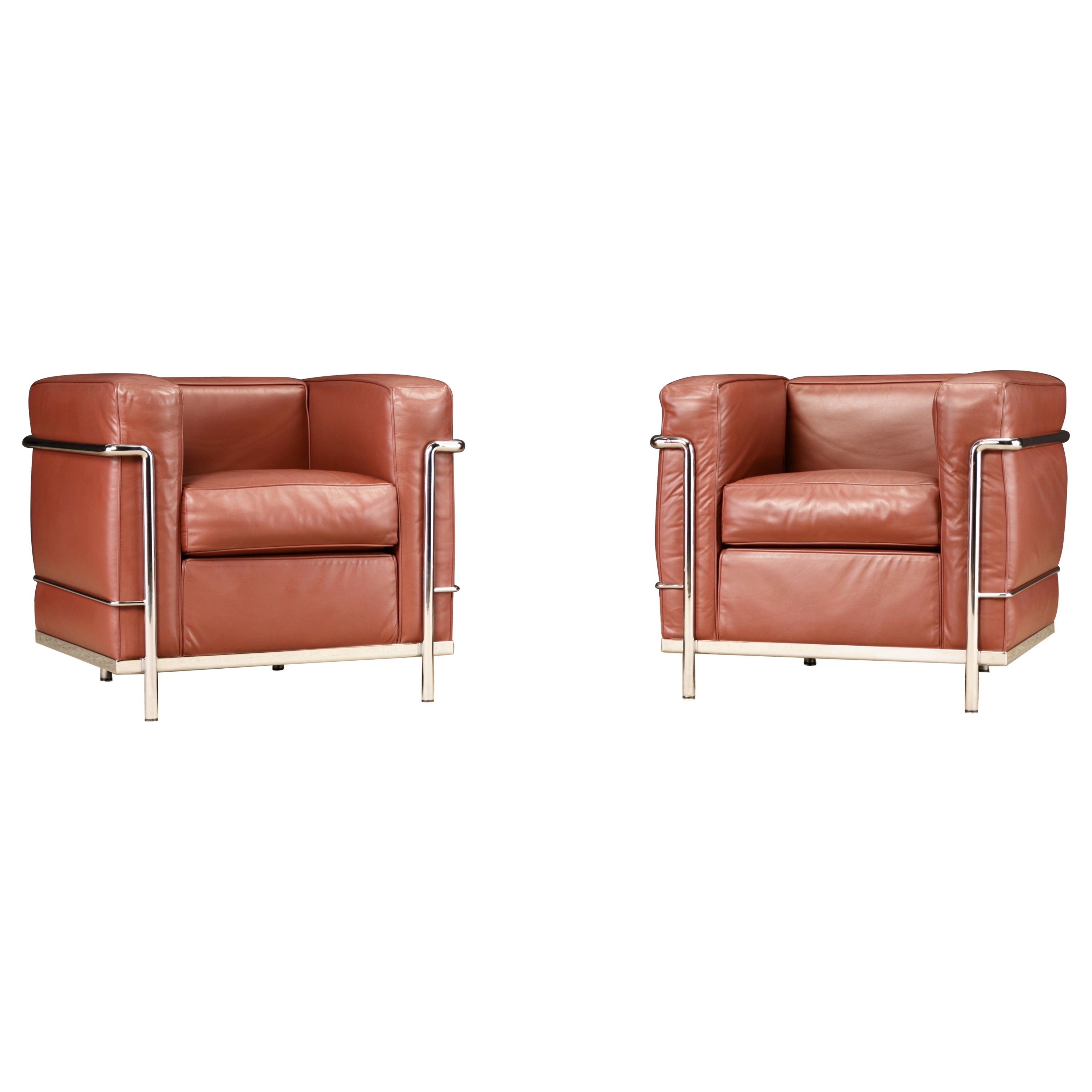
1940s Italian Mid-Century Modern Vintage Le Corbusier
Wood
Mid-20th Century American Mid-Century Modern Le Corbusier
Chrome
1950s Indian Mid-Century Modern Vintage Le Corbusier
Teak
2010s Italian Bauhaus Le Corbusier
Chrome
1950s French Mid-Century Modern Vintage Le Corbusier
Metal, Brass
1940s French Mid-Century Modern Vintage Le Corbusier
Steel
1990s Italian Bauhaus Le Corbusier
Steel
Mid-20th Century Italian Mid-Century Modern Le Corbusier
Steel, Chrome
Popular Searches
Le Corbusier Sale Prices
| Sold Date | Sold Price | Category | Material | Creation Year | ||||||||||||||||||||||||||||||||||||||||||||||||||||||||||||||||||||||||||||||||||||||||||||||||
|
| $2,199 |
Average sold price of items in the past 12 months |
| $126-$10,000 |
| Sold price range of items in the past 12 months |
Creators Similar to Le Corbusier




Le Corbusier furniture for sale on 1stDibs.
- What is Le Corbusier famous for?2 Answers1stDibs ExpertFebruary 22, 2021Le Corbusier was an architect, furniture designer and city planner who is famous for designs that combined bold expression and function. He promoted open, efficient spaces and clean geometric forms. Find furniture designed by Le Corbusier and his collaborators on 1stDibs.1stDibs ExpertApril 5, 2022The Swiss-born Charles-Édouard Jeanneret, best known by his adopted name Le Corbusier, is famous for his work as an architect, city planner and designer who combined bold sculptural expressionism with functionality. Often referred to as the pioneer of progress-minded architecture, Le Corbusier is widely influential. His career spanned almost five decades, and his furniture is known to be refined and chic. Shop a selection of Le Corbusier furniture on 1stDibs.
- What was Le Corbusier’s style?1 Answer1stDibs ExpertApril 5, 2022Le Corbusier’s style of design is known as brutalism and his furniture designs are minimalist and efficient. Many of his furniture pieces combine industrial design with comfort and warmth. Shop a selection of Le Corbusier furniture from some of the world’s top dealers on 1stDibs.
- What was Le Corbusier’s theory?1 Answer1stDibs ExpertAugust 8, 2024Le Corbusier's theory is known as the five points of architecture. Developed in the 1920s, these principles had a major influence on the approach to modern architecture and include pilotis (elevating a building on pylons), the free design of a façade, the free design of a ground plan, a horizontal window and a roof garden. The architect prioritized modern, open interiors and emphasized light, rational designs. His architecture and interiors share a clear sense of space and structural order, underscoring beauty in harmony, proportion and simplicity. He rejected excessive architectural ornament and created buildings with elemental geometric forms that were made of industrial materials such as steel and reinforced concrete. Le Corbusier’s furniture espoused these same ideals. His designs are spare, minimal and efficient, but at the same time, they offer supreme comfort. On 1stDibs, explore a selection of Le Corbusier furniture.
- Why is he called Le Corbusier?1 Answer1stDibs ExpertAugust 15, 2024The Swiss architect and designer is called Le Corbusier because he chose the name for himself. Born Charles-Édouard Jeanneret, Le Corbusier derived his pseudonym from the surname Lecorbésier, which belonged to some of his family members. A pioneer of progress-minded modern architecture, Le Corbusier sought to impose a rational order on the chaos of the world through design. He rejected excessive architectural ornament and created buildings with elemental geometric forms. Le Corbusier’s furniture espouses these same ideals. His designs are spare, minimal and efficient, but at the same time offer supreme comfort. Find a wide range of Le Corbusier furniture on 1stDibs.
- What did Le Corbusier invent?1 Answer1stDibs ExpertApril 5, 2022Le Corbusier invented a style of design called brutalism, which is characterized by unornamented, sleek and smooth furniture and architecture. The design style emphasizes hand-crafted, natural elements and rejects modern materials and technology. Shop a range of Le Corbusier furniture on 1stDibs.
- 1stDibs ExpertApril 5, 2022Le Corbusier furniture is part of the modernist movement, with simple and sleek designs at the forefront of all furniture pieces. Shop a collection of Le Corbusier furniture from some of the world’s top sellers on 1stDibs.
- 1stDibs ExpertApril 5, 2024Le Corbusier's architectural style was modernism. Specifically, he helped to shape the International Style, which emphasized simple, rectilinear forms and open interior spaces. A fine example of this approach can be seen in Le Corbusier's Villa Savoye in Paris. Not just an architect, Le Corbusier also worked as a designer, and his furniture is largely associated with the mid-century modern design movement. Find a selection of Le Corbusier furniture on 1stDibs.
- 1stDibs ExpertOctober 7, 2024The main difference between Frank Lloyd Wright and Le Corbusier is the architects’ philosophy. Frank Lloyd Wright helped pioneer organic architecture—buildings that coexist harmoniously with their natural surroundings. As a result, he often preferred to use natural and even local materials in his buildings and furniture. Le Corbusier was more progress-minded and sought to impose rational order on the world's chaos through design. He focused on designs for living in modern urban settings. In his furniture, he tended to blend natural and human-made materials, such as tubular chrome and genuine leather. On 1stDibs, shop a variety of Frank Lloyd Wright and Le Corbusier furniture.
- 1stDibs ExpertSeptember 27, 2024Charles-Édouard Jeanneret was called Le Corbusier because that was the name the French-Swiss designer and architect chose for himself. His maternal grandfather's name was Lecorbésier, and Jeanneret altered the surname to create his adopted name. Le Corbusier was a pioneer of progress-minded modern architecture who sought to impose rational order on the chaos of the world through design. On 1stDibs, shop a diverse assortment of Le Corbusier furniture.
